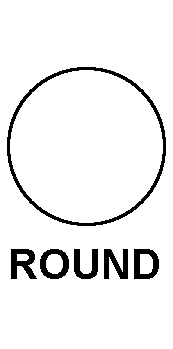6145005962606
Price Quote Get an up to date pricing and availability quote for this product. Order online or over the phone.
Quality Commitment
Serving our customers with quality and safety first.
- AS9120 Certified
- Audited supply chain
- ITAR Registered
- DDTC Registered
- HAZMAT Certified
- Customer service objectives
- Every product 100% inspected

6145-00-596-2606 Specification Set by the OEM (see RNCC code 3)
round
0.700in.
4
104 all conductors
stranded all conductors
10 awg all conductors
30 all conductors
4 singles
600.0 root mean square (rms) operating voltage all conductors
green 4th position cover fourth conductor
copper core conductor all conductors
QQ-W-343, soft fed spec single material response core conductor all conductors
81349-MILC3432 specification (includes engineering type bulletins, brochures, etc., that reflect specification type data in specification format; excludes commercial catalogs, industry directories, and similar trade publications, reflecting general type data on certain environmental and performance requirements and test conditions that are shown as "typical", "average", "", etc.) .
Cross Reference Parts Part numbers that meet the specification outlined on this page and set by the OEM
Identification Item Identification Guide (IIG) and Item Name Code (INC)

Definition Definition of approved item name (AIN): "CABLE,POWER,ELECTRICAL"
Two or more insulated conductors (solid or stranded) contained in a common covering, or two or more insulated conductors twisted or molded together without a common covering, or one insulated conductor with a metallic covering, covering, shield, or outer conductor. The rated working voltage of the item must be 300 volts or more, or in lieu of this the test voltage must be 1,000 volts or more; and the size of each individual conductor must be number 18 american wire gage (0.75 square millimeters) or larger. For cables with uninsulated neutral conductor use the hightest rated voltage. Refers to bulk quantities only, for items of definite length with processed ends or terminated in fittings, see cable assembly, power, electrical. For low voltage aircraft and automotive cable, see cable, special purpose, electrical.
6145-00-596-2606 Material Hazmat, Precious Metals, Criticality, Enviroment, and ESD
Indicates there is no data in the hmirs and the nsn is in a fsc not generally suspected of containing hazardous materials.
Precious metal content is unknown
The item does not have a nuclear hardened feature or any other critical feature such as tolerance, fit restriction or application.
Identification Codes
HMIC: Hazardous Material Indicator Code. A one position code that identifies a hazardous item.
PMIC: Precious Metal Indicator Code. A one position code which identifies items that have precious metals as part of their content. precious metals are those metals generally considered to be uncommon, highly valuable, and relatively superior in certain properties such as resistance to corrosion and electrical conductivity.
ESD: Electrostatic Discharge. Indicates if an item is susceptible to electrostatic discharge or electromagnetic interference damage. electrostatic discharge damage occurs when an accumulation of static electricity generated by the relative motion or separation of materials is released to another item by direct contact. electromagnetic interference damage occurs when an item comes into proximity with an electrostatic or magnetic field.
ENAC: Enviromental Attribute Code. Identifies items with environmentally preferred characteristics.
CRITL: Criticality Indicator Code. Indicates an item is technically critical by tolerance, fit, application, nuclear hardness properties, or other characteristics.






